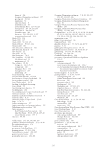17 – ‘Once more into the breach, dear friends …’ 155 irrigation, once established, would lead to an ever-increasing water demand (see Chapters 14–16). The people of the Cooper needed no further evidence to convince them of the extreme threat posed by the Currareva irrigation proposal. The Cooper alliance Early in the campaign to protect the Cooper, a strong alliance developed between the Cooper’s Creek Protection Group, the Australian Conservation Foundation, the Queensland Conservation Council and the Australian ecological science community. The alliance received strong support from people of the other Channel Country rivers, all the way to Lake Eyre, and from old ringers, drovers, outback station people generally, bush poets and songwriters, as well as disgruntled residents of cotton irrigation areas (e.g. Bourke, Narromine, Goondiwindi and Dalby), Macquarie Marshes Environmental Landholders’ Association, Paroo River Association, tourism operators and tourists. There was widespread interest and support from the Australian public and strong media interest from ABC Radio and TV, from ethnic broadcaster 2WEB Bourke, from some commercial radio and TV stations, and from some of the major print media. The pro-irrigation lobby Forces actively promoting the proposed Currareva development comprised the four Currareva partners, the Queensland Cotton Industry Policy Council, the Queensland Irrigators’ Council, and a small group of irrigation aspirants from upstream subcatchments. Interestingly, the peak cotton industry body, the Australian Cotton Foundation, remained neutral in the debate. It was generally assumed that they did not welcome the additional negative publicity likely to be generated by the Cooper cotton proposal while the Australian Cotton Foundation was attempting to promote a ‘cleaner’ image for the cotton industry. Recognising the unwillingness of the Australian Cotton Foundation to enter the debate, the Cooper’s Creek Protection Group decided to focus negative publicity on irrigation broadly, rather than on cotton, avoiding any publicity battle with the well-resourced Cotton Foundation. Department of Natural Resources The Currareva proposal and development application triggered the first Water Management Plan (now called a Water Resource Plan) in Queensland. This required stakeholder consultation, under the Water Act 1989. This was achieved by setting up a ‘Cooper Creek Advisory Panel’, including individuals from the Cooper’s Creek Protection Group, South Australian Department of Environment and Natural Resources, the South Australian Arid Areas Water Resources Commission, the Queensland Department of Natural Resources, the Queensland Department of Environment, the Barcoo Shire Council, the Conservation Council of South Australia, the Queensland Conservation Council, as well as the Currareva proponents and their allies from the Queensland Irrigators’ Council and the Queensland Cotton Industry Policy Council. The process was conducted by the Queensland Department of Natural Resources. Hydrological modelling of Cooper flows was done by an expert group within the Queensland Department of Natural Resources.
Downloaded from CSIRO with access from at 216.73.216.140 on Nov 22, 2025, 7:29 AM. (c) CSIRO Publishing

















































































































































































































































































